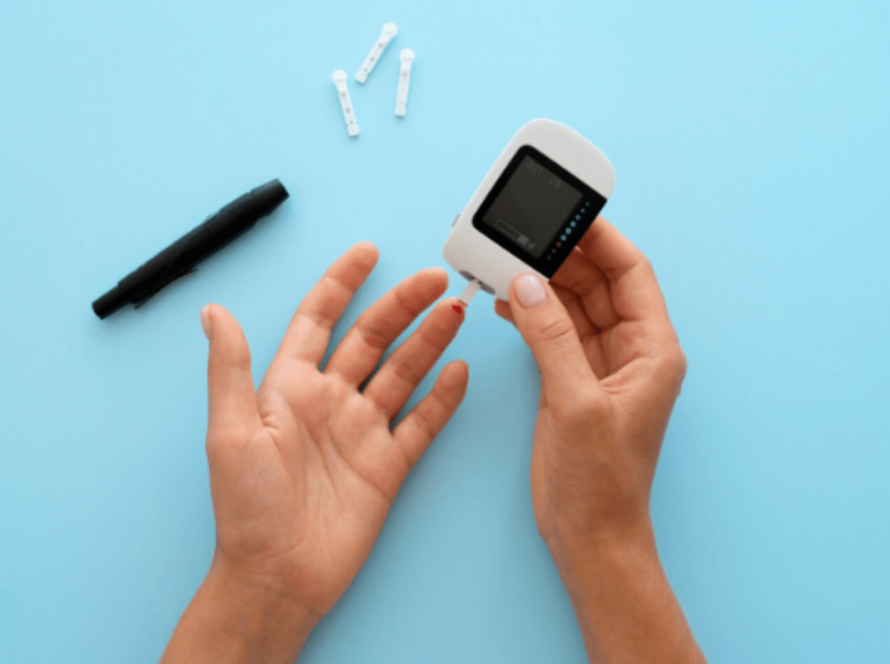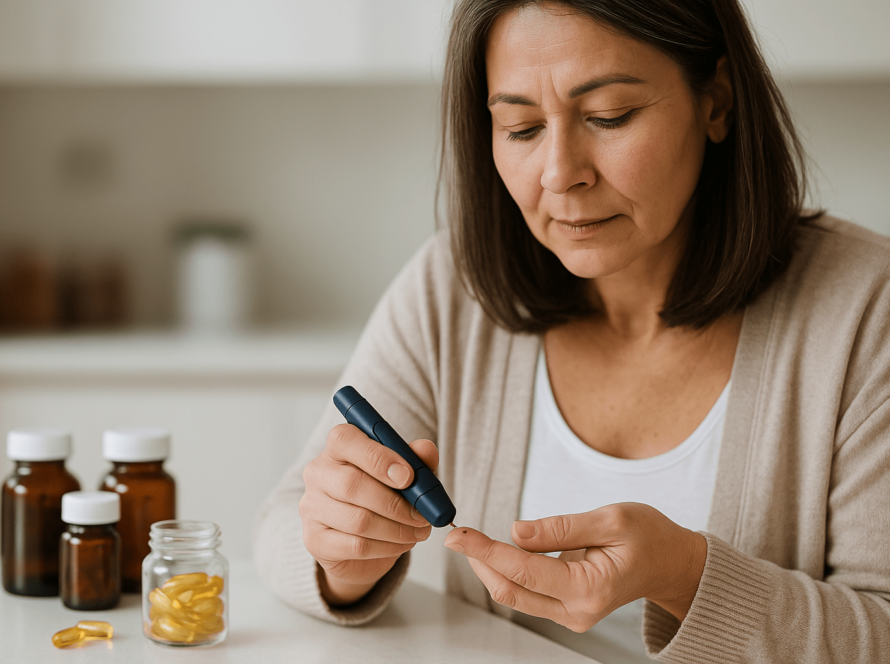Is Your Blood Sugar Aging You? What HbA1c and Fasting Insulin Really Mean
Let’s be honest. Most of us don’t think about blood sugar unless we’re diabetic or watching someone poke their finger with a glucose meter. But what if I told you there’s a real connection between blood sugar and aging? It might be quietly speeding things up behind the scenes without you even knowing it.
Yeah. Wrinkles, brain fog, stubborn belly fat. There’s a chance your glucose levels, even if they’re not “diabetic,” are messing with your body in ways that go far beyond energy crashes after lunch.
And that’s where two key numbers come into play: your HbA1c and your fasting insulin levels. Think of them as health detectives. They hold clues not only to how your body handles sugar, but how fast it might be aging on the inside.
Let’s break this down in a way that’s simple, honest, and useful.
What Are HbA1c and Fasting Insulin?
Before we go any further, let’s decode these terms. Don’t worry, we’ll keep it simple.
HbA1c meaning
HbA1c is short for glycated hemoglobin. Sounds like sci-fi, but here’s what it means: when sugar floats around in your bloodstream, some of it sticks to your red blood cells. The more sugar in your blood, the more that gets stuck.
Your HbA1c tells you the average amount of sugar that’s been in your blood over the last 2–3 months. It’s like a long-term memory of your blood sugar habits.
Doctors often use it to diagnose or track diabetes, but guess what? Even if you’re not diabetic, a slightly high HbA1c can still be a red flag. It can signal that your body is having a harder time clearing sugar than it should.
Fasting insulin levels
Now let’s talk insulin. It’s the hormone that helps your body move sugar from your blood into your cells. You want just the right amount of it, not too much, not too little.
Fasting insulin levels measure how much insulin your body needs after you’ve gone 8–12 hours without eating. If your insulin is high during fasting, your cells are likely ignoring insulin’s signal. That’s not a good thing. It usually means your body is working overtime to control sugar, and that could be an early sign of insulin resistance.

How Blood Sugar Affects Aging
Here’s where things get interesting. Sugar doesn’t just make you feel sleepy after a big lunch or crave cookies at midnight. It changes your body at the cellular level.
When sugar floats around in your blood for too long, it binds to proteins. This forms harmful molecules called “AGEs”, advanced glycation end-products. Yeah, even the name sounds like something you don’t want inside you.
These AGEs cause inflammation and damage cells over time. Think of them like rust. They stiffen your blood vessels, slow tissue repair, and mess with your skin’s collagen. This is where blood sugar and aging move together, affecting your heart, brain, joints, and even your appearance.
Here’s a peek at what higher blood sugar over time can lead to:
Impact Area | What Happens When Blood Sugar Stays High |
Skin | Collagen breakdown → more wrinkles, sagging |
Brain | Increased risk of memory problems |
Muscles | Weaker strength, slower recovery |
Eyes | Vision issues, higher chance of eye disease |
Heart | More inflammation, higher risk of heart disease |
And remember, your HbA1c and fasting insulin are your clues. If they’re creeping up, your body is already showing signs it’s struggling to maintain balance.
Why These Numbers Matter for Metabolic Health and Longevity
Let’s shift gears for a second.
Metabolic health isn’t just about weight or calories. It’s about how efficiently your body uses energy. When your blood sugar is steady and your insulin is responsive, your body works better. You sleep more deeply, think clearly, and recover faster.
When it’s not? You feel tired, foggy, and irritable. You gain fat in weird places. You age faster.
So where do HbA1c and fasting insulin fit in?
They’re warning lights. If your HbA1c is going up even slightly, it means sugar is lingering in your blood. And if your fasting insulin is high, your body is fighting a quiet battle with insulin resistance.
The worst part? You might not feel anything at first. No headaches, no real symptoms. Just a slow drift toward aging faster than you need to.
If you want to live longer and feel younger, watching these numbers can give you a major advantage.
Spotting Insulin Resistance Symptoms Early
Insulin resistance doesn’t always knock on your door with flashing lights. Sometimes it whispers. You’ll want to listen closely.
Here are some clues your body might be dealing with it:
- Low energy after meals
- Cravings for sweets or carbs
- Extra weight around your waist
- Brain fog or trouble focusing
- Mood swings
- High blood pressure or cholesterol
These are common symptoms and easy to blame on stress, work, or aging. But if you’ve been feeling “off” and can’t quite explain it, these signs could be tied to rising fasting insulin levels or creeping insulin resistance.
Getting tested is easy. A quick blood test can check your fasting insulin. And your doctor likely already measures your HbA1c during regular checkups. You just need to ask what the numbers mean.

What You Can Do: Simple Steps to Improve Markers
Let’s be real. No one wants to overhaul their life overnight. But small steps? Doable. And they add up.
Here’s where to start:
1. Clean Up Your Plate
You don’t need to give up everything you love. Just focus on:
- More fiber (veggies, legumes, chia seeds)
- Healthy fats (avocados, nuts, olive oil)
- Protein with every meal (chicken, eggs, tofu)
- Cutting back added sugars (soda, candy, sweetened coffee)
One small change? Try swapping refined carbs like white bread or pasta for whole grains. Your blood sugar will thank you.
2. Move Every Day
You don’t have to hit the gym hard. Even a 20-minute walk after dinner can improve blood sugar and insulin response.
Other simple wins:
- Bodyweight squats while watching TV
- Stretching in the morning
- Taking stairs instead of elevators
3. Stress and Sleep
Poor sleep and stress mess with your insulin sensitivity. Here’s how to fight back:
- Aim for 7–8 hours of real sleep
- Try breathing exercises or journaling
- Unplug from screens 30 minutes before bed
4. Track Your Numbers
This part is empowering. Once you know your HbA1c and fasting insulin levels, you can track changes. Maybe test every 3–6 months and keep a simple log.
Your body’s telling you what it needs. These numbers help you listen.
Conclusion
So, let’s go back to the big question. Is your blood sugar aging you?
The truth is: it might be. Even if you’re not diabetic. Even if you feel totally fine. Your HbA1c and fasting insulin levels can quietly show how well your body is handling blood sugar and whether it’s moving you closer to faster aging.
There’s a strong connection between blood sugar and aging, but it’s something you can absolutely work with. Small lifestyle shifts, targeted habits, and regular tracking can slow that process down and help you feel younger for longer.
If you’re ready to take real steps toward better energy, clearer thinking, and stronger metabolic health, the Lifespire Longevity Program is a great place to start. It’s designed to help you take control of the numbers that matter most.
You don’t have to wait until things feel broken. You can start now and give your body a better future, one smart move at a time.


